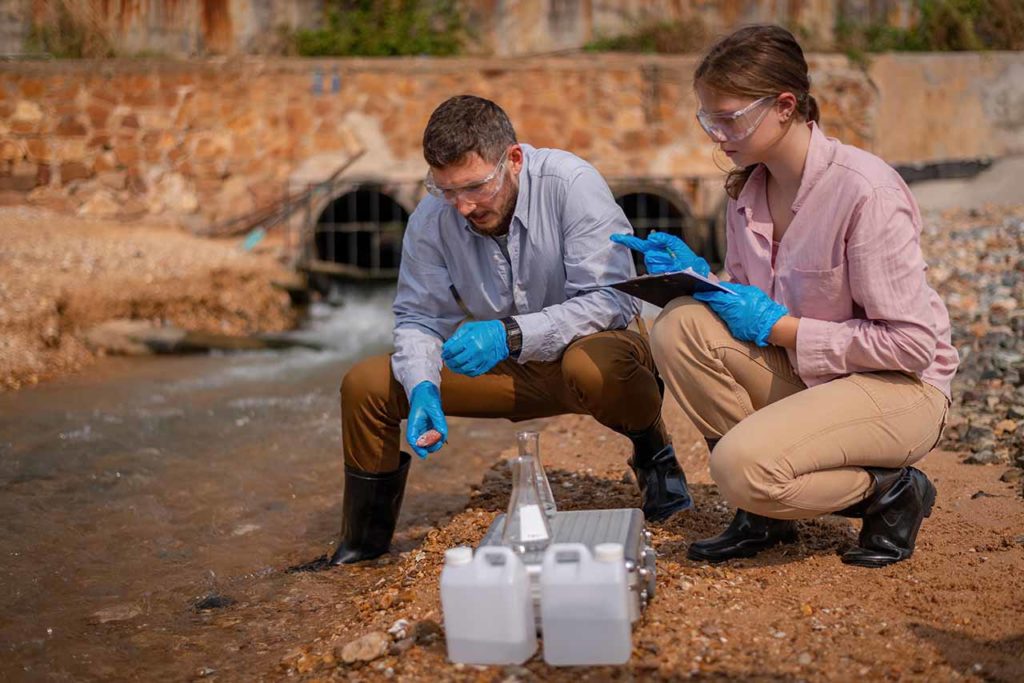Posts by d.brodt
Specialty Instruments for Unique Air Monitoring Challenges: CO2, Methane, and More
Introduction to Specialty Instruments In the realm of air monitoring, specialty instruments stand out as crucial tools designed to address unique challenges in detecting specific gasses like CO2, methane, and more. Unlike conventional air quality monitors, which focus on general pollutants, specialty instruments are tailored to target particular gasses, offering enhanced sensitivity and accuracy in…
Read MoreMultigas Monitors: Comprehensive Air Quality Assessment with Single Device
Introduction to Multigas Monitors Multigas Monitors represent a significant advancement in the realm of gas detection technology, offering comprehensive air quality assessment in various industrial and environmental settings. These sophisticated devices are designed to detect and measure multiple gasses simultaneously, providing users with real-time data on potential hazards and enabling prompt intervention to ensure workplace…
Read MoreDemystifying Combustible Gas Meters (CGMs): Essential Safety Tools for Confined Spaces
Introduction to Combustible Gas Meters (CGMs) In the realm of workplace safety, Combustible Gas Meters (CGMs) stand as indispensable instruments, particularly in confined spaces where the risk of gas buildup and potential explosions is heightened. CGMs serve as frontline defense mechanisms, designed to detect and measure the concentration of flammable gasses in the air, thereby…
Read MoreExploring the Versatility of Photo Ionization Detectors (PIDs) in Air Quality Monitoring
Introduction to Photo Ionization Detectors (PIDs) Photo Ionization Detectors (PIDs) are invaluable tools in the realm of air quality monitoring, renowned for their versatility and efficiency in detecting volatile organic compounds (VOCs) and other gasses. These detectors operate based on the principle of photoionization, wherein high-energy ultraviolet (UV) light emitted by a lamp interacts with…
Read MoreUnderstanding Flame Ionization Detectors (FIDs): Applications and Benefits
Introduction to Flame Ionization Detectors (FIDs) Flame Ionization Detectors (FIDs) represent a vital tool in air quality monitoring and industrial safety, offering unparalleled sensitivity and versatility in detecting organic compounds. Developed in the mid-20th century, FIDs have become indispensable instruments across various industries due to their ability to accurately measure concentrations of volatile organic compounds…
Read MoreNavigating PID Detector Rentals for Environmental Projects
How to Choose the Right PID Detector Rental Choosing the right PID detector rental involves understanding both your project needs and the capabilities of various PID models. Start by assessing the specific VOCs you’ll be monitoring, as different detectors have different sensitivities and detection ranges. Consider the environment in which you’ll be working—whether it involves…
Read MoreEnhancing PID Detector Use: Advanced Applications and Maintenance
In-Depth Look at PID Detector Accessories Accessories can significantly enhance the functionality and adaptability of PID detectors, making them more suitable for a variety of environmental monitoring situations. From protective cases that shield the device in harsh conditions to external probes that extend its reach into confined spaces, each accessory serves a unique purpose. Filters…
Read MoreMaximizing PID Detector Performance: Maintenance and Safety
Setting Up Your Rented PID Detector: A Step-by-Step Guide Starting your environmental monitoring project with a rented PID detector requires a few essential steps to ensure the device is ready for accurate and efficient field use. First, upon receiving your PID detector, inspect the unit for any signs of damage or wear that could affect…
Read MoreUnlocking the Power of PID Detectors in Environmental Monitoring
Photoionization Detection (PID) technology is a cornerstone in the field of environmental monitoring, offering a reliable method for detecting volatile organic compounds (VOCs). At its core, PID involves the use of ultraviolet (UV) light to ionize gas molecules, creating a measurable electric current that quantifies the concentration of VOCs present in the air. This method’s…
Read MoreWhy Renting Water Quality Instruments Can Be a Game-Changer for Your Project
Introduction to the Importance of Water Quality Monitoring In the intricate world of environmental management, the significance of water quality monitoring cannot be overstated. Whether it’s for assessing the health of aquatic ecosystems, ensuring the safety of drinking water, or monitoring waste water discharge, accurate and reliable water quality data is pivotal. This data…
Read More
